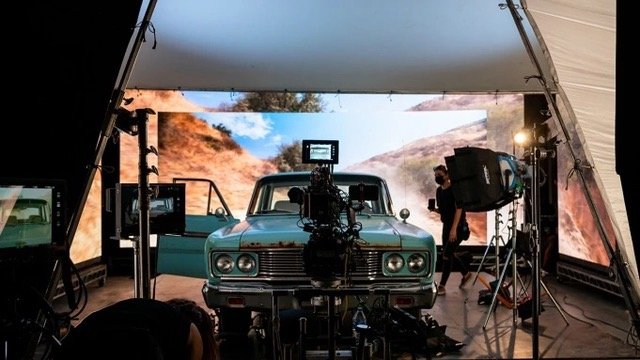American Society of Cinematographers Unwraps StEM2 Project to Test New Tech
StEM2 material will be available in early 2022 for testing consumer and professional displays, theater projection systems, and image processing tools used in production and postproduction. Carolyn Giardina
The American Society of Cinematographers is unwrapping its Standard Evaluation Material II (StEM2) project. The short film was made to offer a consistent baseline while evaluating a myriad of different technologies and workflows used to produce and display movies and episodic series, with an eye toward maintaining the filmmakers’ intent. This includes use in testing consumer and professional displays, theater projection systems, streaming systems and image-processing tools used in production and postproduction.
The test packages will be available for licensing in early 2022 for free in roughly 25 theatrical and home TV formats, including combinations of 2K, 4K and 8K resolution; standard and high dynamic range (HDR10 and Dolby Vision); and Dolby Atmos, 5.1 and stereo sound.
StEM2 represents the same sort of wide initiative as the 2004 production of the 12-minute StEM short — a scene from an Italian wedding in various lighting conditions — that was led by the ASC and studio consortium Digital Cinema Initiatives (DCI), which was used to evaluate and set technical specifications for digital cinema in its early days. “The original StEM was a wonderful tool and did exactly what it needed to do for digital projection technology. But there are so many technological advancements that have happened since 2004, including high dynamic range and [wide] color gamut … We realized we had to do an updated version,” StEM2 writer and director Jay Holben told The Hollywood Reporter.
Titled The Mission, the StEM2 material is a 16-minute short film that follows a group of scientists aiming to thwart the plans of an evil doer, which was shot over 5 days last summer. This included interior and exterior locations at the Blue Cloud Movie Ranch in Santa Clarita, involving stunts and a car chase; ARRI Creative Space in Burbank using its LED wall for virtual production and for video playback for plates for interiors of the car chase sequences; and Studio 60 in downtown Los Angeles for additional interior and night exteriors.
The Mission was produced with backing (monetary and/or services) from 33 studios, technology companies and other stakeholders, including a seed grant from Epic MegaGrants, and support from the Academy of Motion Picture Arts and Sciences’ Science and Technology Council.
The project involved use of a variety of tools including cameras from ARRI, Sony, Red and Blackmagic Design, and involved the use of the Academy Color Encoding System (ACES) throughout the entire pipeline. Production and post also involved testing cloud workflows, dailies, editing, rendering and creation of deliverables.
Grading and sound postproduction was completed at Roundabout Entertainment with its sister sound company South Lake Audio. Additional work was finished at the Dolby theater on Vine and the Barco HDR theater at Glen Glenn Studios.
Holben says numerous lessons about the latest tools and workflows were learned during production, one being the challenges of visual effects when they are created for standard dynamic range. “When they translated into HDR, there are definitely problems that occur, so much so that it really is very important for visual effects artists to be able to see their material in high dynamic range, before it gets sent out,” Holben notes.
Adds Wendy Aylsworth, who produced with Joachim ‘JZ’ Zell and Holben: “Knowing that HDR is probably here to stay, I think this provides even more information and ammunition for creatives to try to get accustomed to HDR as quickly as they can, so they can start doing their initial grade in HDR and creating SDR versions out of that. Because when you go down in dynamic range, you have less issues.”
The production also involved what is being called “Tech Viz,” that is, creating a 3D previsualization of the physical production environment to complete scale and using it to plot the shoot. “We were able to troubleshoot a lot of things ahead of time,” says Holben. “That’s something that I would like to see become a lot more common.”
Key credits include:
Director, Writer – Jay Holben
Producers – Wendy Aylsworth, Jay Holben, Joachim Zell
Executive Producer – Curtis Clark
Director of Photography – Christopher Probst
Second Unit Director/Director of Photography, Stunt Coordinator-Steven Shaw
Editor – Tim Squyres
Production Design – John Auto
Costume Design – Marilyn Vance, Sylvestere Cetina
VFX Supervisor – David Stump
Postproduction Supervisor: Joachim Zell
Metadata Supervisor- Greg Ciaccio
Sound Design – Terry Dorman, Greg Hedgepath, Alan Schultz
Original Score – Nami Melumad, Jacques Brautbar
Line Producer – Justin Deiner
Cast – Ryan Kirby, Angelina, Jara, Nimo Purcell
Production Services, VFX-Drive Studios
Tech Viz-Happy Mushroom

